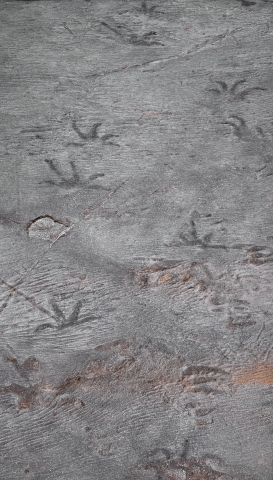
Who went this way? Good question, as when we discover such fossilised imprints, we do not have access to the skeleton of the animal and therefore we don’t know its name. To identify it, the researchers will study the fossilised skeletons of animals found in the rocks of the same period, and compare the paws of each skeleton to the footprints. Then give it the name or names of the possible author of these footprints. Often we don’t give a name but a family name. Varanopus curvidactylus was made by a reptile of the Captorhinides family of which Captorhinus is the most current representative during this period.
This work belongs to the collection "Traces of life".
Fossilised footprints in the ruffes of Salagou
contact us
Postal address
1 place Francis Morand
34700 Lodève
France
Follow us
on social networks




